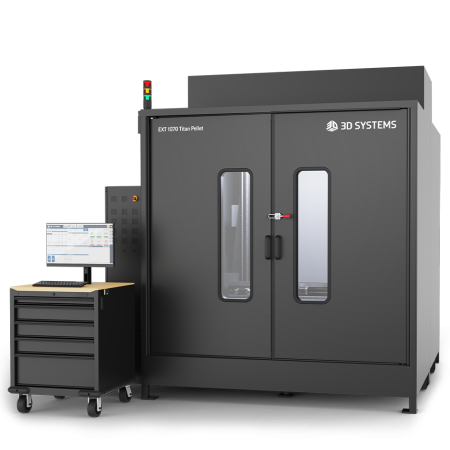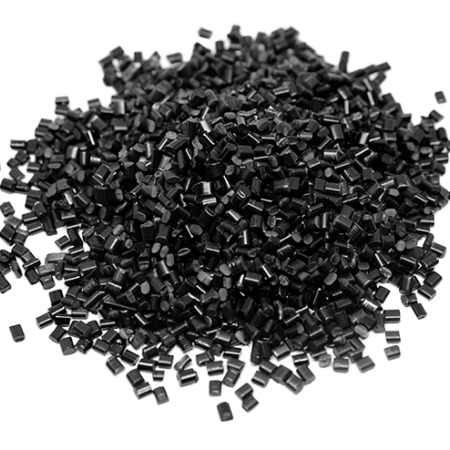Additive Manufacturing (AM) is a transformative technology in furniture production, allowing unparalleled customization, design flexibility, and sustainability. Among the various 3D printing technologies, pellet extrusion has emerged as the method of choice because it can produce large-scale pieces quickly and affordably, making end-use furniture production feasible.
Design studio Slicelab teamed up with 3D Systems’ Applications Innovation Group (AIG) on a recent project to bring to life a concept of a lounge chair and lamp inspired by the visual language of steam or smoke. This case study explores the process from the design concept to the creation of two furniture pieces that could only be created with pellet-extrusion 3D printing.
“We gravitate toward designs that are unique for 3D printing and that are organic. We push the limits of the geometry design and push the limits of design for additive to get more people to use additive and see what it can do.”
-Arthur Azoulai, Slicelab Co-Founder
Lamp designed by Slicelab and 3D printed with PETG pellets on EXT 1270 Titan Pellet printer.
Background
In the past, furniture designers and manufacturers often faced challenges when it came to creating unique, customizable furniture. Traditional furniture manufacturing methods require extensive tooling and time-consuming prototyping and generate significant material waste. Additionally, producing complex designs with traditional methods is often cost prohibitive or not possible. Pellet extrusion AM offers solutions to those challenges, opening the manufacturing possibilities for innovative companies like Slicelab.
Slicelab founders Arthur Azoulai and Diego Taccioli create furniture, tangible product design, and architectural installations by leveraging advanced fabrication methods, primarily additive manufacturing. They turned to 3D Systems’ large-format pellet extrusion Titan 3D printers because of the ability to not only produce the chair and lamp in a single piece but also because of the speed and the wide range of pellet materials available for printing.
Steam lounge chair designed by Slicelab and 3D printed with PETG pellets on EXT 1270 Titan Pellet 3D printer.
Designing 3D Printed Furniture: Thinking Outside the Box
Melding aesthetics with function is never simple, and Slicelab knew they wanted this chair to have an organic and interesting profile that not only stood apart from traditional furniture but even differed from other 3D-printed chairs circulating in the market.
“Other 3D printed chairs generally are not taking full advantage of additive technology. They’re printed on the Y axis, basically flipping the chair to the side and doing a profile extrusion of some sort,” said Azoulai.
Instead, Slicelab designed the chair to be printed with the front of the chair on the bottom, in contact with the print bed. This approach allowed more freedom in the overall form but also forced them to think creatively to avoid excessive overhangs that could make it difficult to print. And as with all end-use additively manufactured parts, it had to have the strength and functionality of a chair, and not flex too much when bearing weight.
“We worked closely with 3D System’s AIG team as we iterated the design. Our form pushed the printability to the edge in parallel with the consideration of the overall structure,” said Taccioli. “Their folks were able to help us improve the design throughout the process to avoid excessive flexibility.”
From Digital to Physical
Leveraging the high speed and throughput of the Titan pellet extrusion systems, the first versions of the steam lounge chair and lamp were produced in a matter of days. Compared to filament extrusion printing, pellet extrusion is up to 10X faster and 10X lower in cost, enabling design iteration to not only be timely but affordable. This allowed Slicelab to get the first printed lounge chair in hand and make design changes quickly to improve the angles and dimensions, making the chair more comfortable for a broader audience.
The chair, with dimensions of 33” x 31” x 36”, and the lamp standing at a whopping 67” tall, were each printed in one piece on the EXT 1270 Titan Pellet with a print volume of 50” x 50” x 72”. Due to the sheer size of the parts as well as the aesthetic and functional requirements, Titan pellet extrusion was the only AM technology suitable to produce the pieces. The chair print took 25 hours and used 90 pounds of thermoplastic pellets. Printing the same design on a filament extrusion printer would have taken at least four times as long and cost two to three times more for materials. Pellets also enable extrusion widths of up to 9 mm, yielding much stronger parts than the same part printed on a filament printer.
Results
- The second print of the Steam Lounge Chair was delivered on the design intent. It was comfortable, strong, and visually striking. Slicelab has received interest in the chair from several high-profile clients as well as fine art galleries.
- 3D Systems’ AIG services were able to help Slicelab avoid pitfalls common to projects that push against the limits of AM technology. The Steam Chair’s organic design benefited from close collaboration between the designers and the 3D Systems’ AM experts to not only improve printability but also ensure that it would function as intended.
- Titan 3D printers are uniquely suited to custom furniture production due to their large build size, reliable lights-out manufacturing performance, and high-speed/high-strength pellet extrusion technology.

